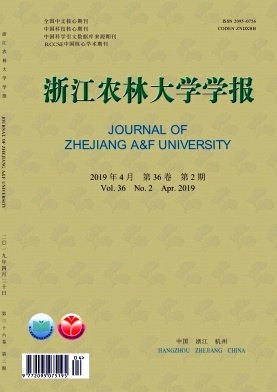-
中草药(Chinese herb medicine)包括中药和草药,是一个组合名词[1],中药源于草药,草药是中药的补充。中医理论认为中草药是人类在自然界中发现并直接供药用的植物、动物、矿物以及基本不改变其理化属性的简单加工品。相比西药,中草药毒副作用小,不易产生抗药性,环保性好;其中某些药物成分不仅抗菌抗病毒,还具有免疫促进作用,能够显著地增强动物的抗病能力,改善动物的免疫机能[2]。随着水产养殖环境的不断恶化以及各类病害的频繁发生,越来越多的环保监测不合格水产养殖企业面临停业整顿或关闭;农业部公布的禁用渔药品种逐年增多[3],化学药物和抗生素的禁用范围也逐年扩大。水产动物病毒疫苗的匮乏和中草药在治疗病毒性、自身免疫性和营养代谢性疾病上的作用,促使绿色安全的中草药成为当前鱼药研究和开发的重点。中草药饲料添加剂的研究起步较晚,在水产动物病害日益增多、环境保护和食品安全压力不断加大的今天,中草药在水产养殖疾病防治方面所起的作用日益凸显;传统的复方中草药制剂成份复杂,成本较高,作用机制不够清楚,难以满足现代水产养殖业的需要,由此单一中草药及其提取物在水产动物免疫中的应用研究成为当前水产动物中草药免疫的主要方向。
HTML
-
中草药中含有甙类、有机酸类、多糖类、生物碱、鞣质和黄酮类等有效成分,对水产动物机体的抗病原微生物活性、免疫功能、生产性能有促进作用。中草药饲料添加剂[4]以中草药为饲料添加剂,副作用小,残留物少,不产生环境污染,没有抗药性,不激发药源性疾病;天然结构和生物活性较为完整,动物体更容易接受,因而促生长、调节新陈代谢、提高抗逆性和抗病性等作用较为明显。伴随着各项法律法规的出台,社会对食品安全的日益重视和越来越多的化学物质的禁用,使得具备绿色安全等特质的中草药逐渐替代化学合成药物和植物生长调节剂成为新兴的饲料添加剂。
-
中草药对病毒的直接抑制作用主要是通过其免疫活性物质抑制病毒感染增殖过程中的某一个环节实现。WANG等[5]通过细胞试验发现:从绿茶提取物中得到的表没食子儿茶素没食子酸酯(epigallocatechin gallate,EGCG)能阻断草鱼Ctenopharyngodon idellus呼肠孤病毒(respiratory enteric orphan virus)与细胞的层粘连蛋白受体结合,从而抑制草鱼呼肠孤病毒感染草鱼肾细胞。WANG等[6]用EGCG处理感染白斑综合症病毒(WSSV)的拟穴青蟹Scylla paramamosain,攻毒实验结果发现1.00 mg·kg-1EGCG能抑制病毒复制,显著增强拟穴青蟹抗WSSV感染的能力,其存活率显著提高。黄芪Radix astragali,金银花Lonicerae japonica及板蓝根Isatidis radix等对病毒的复制也有显著的抑制作用[7]。
-
中草药除了能直接抑制病毒复制以外,还可以通过诱发机体产生干扰素或提高机体的非特异性免疫水平以达到抑制病毒感染的目的。HAETRAKUL等[8]发现在鲤鱼Cyprinus carpio感染鲤疱疹病毒3型(CyHV-3)前后注射0.99 g·L-1的扭序花Clinacanthus nutans叶片提取物均具有显著的抗病毒作用。BALASUBRAMANIAN等[9]用印度木橘Aegle marmelos,苦瓜Momordica charantia和狗牙根Cynodon dactylon的提取物作为免疫增强剂喂养斑节对虾Penaeus monodon,表明攻毒实验对抵抗对虾白斑综合症作用较强,其中使用100.00 mg·kg-1的狗牙根水提取物喂食后攻毒存活率可达100%。进一步研究[10]发现:狗牙根水提取物对对虾白斑综合症病毒抑制作用较强,饲料中添加20.00 g·kg-1的水提取物粉末,斑节对虾攻毒试验成活率可达100%。RAMESHTHANGAM等[11]以添加200.00和300.00 g·kg-1水黄皮Pongamia pinnata叶片乙醇提取物粉末的饲料投喂斑节对虾,饲喂11 d后,白斑综合症病毒(WSSV)攻毒成活率可达40%和80%。YOGEESWARAN等[12]用对虾白斑综合症病毒感染斑节对虾,用添加印度人苋Acalypha indica,狗牙根,胡黄连Picrorhiza scrophulariiflora,南非醉茄Withania somnifera和生姜Zingiber officinale等提取物作为免疫增强剂喂食,5 d后未添加免疫增强剂的全部死亡,而投喂添加草本免疫增强剂的饲料5,30和60 d,成活率分别为30%,50%和60%。DIREKBUSARAKOM等[13]发现扭序花叶片提取物可有效防治斑节对虾黄头病,添加量为1.00 g·kg-1防治效果最好。由此证实中草药可以有效帮助虾蟹抵抗WSSV感染。
2.1. 中草药对病毒的直接抑制作用
2.2. 中草药通过免疫调节作用抗病毒
-
一些中草药对病原细菌存在一定的直接杀灭或抑制作用,如黄芪,黄芩Scutellaria baicalensis,金银花,地锦草Euphorbia humifusa,蒲公英Taraxacum mongolicum,穿心莲Andrographis paniculata,板蓝根,五倍子Galla chinensis,大蒜Allium sativum,杜仲Eucommia ulmoides,甘草Glycyrrhiza uralensis等。SYAHIDAH等[14]研究发现槟榔Piper betle叶提取物对芽孢杆菌Bacillus,屎肠球菌Entrococcus feacalis,金黄色葡萄球菌Staphylococcus aureus,无乳链球菌Streptococcus agalactiae,嗜水气单胞菌Aeromonas hydrophila,大肠埃希菌Escherichia coli,肺克雷伯氏菌Klebsiella pneumoniae,绿浓杆菌Pseudomonas aeruginosa和溶藻弧菌Vibrio alginolyticus等9种鱼类病原菌均有较强的抑制作用。SHEIKHLAR等[15]对柠檬Citrus limon,飞扬草Euphorbia hirta和葫芦巴Trigonella foenum-graecum进行了体外抗菌实验,发现飞扬草的甲醇提取物与其他草药相比具有较大的抑制效果和最低抑制浓度。
-
除了直接的体外抑菌效果以外,中草药还具有调节肠道内菌群结构的作用,尤其是降低有害病菌的数量。罗琳等[16]给草鱼分组投喂了添加了5.00,10.00和20.00 g·kg-1穿心莲的饲料,试验的第1,4,7,14,21,28天取样检测肠内菌群的种类和数量,发现穿心莲并不会影响肠内大部分优势菌群的生长,但是当饵料添加量为l0.00和20.00 g·kg-1时,气单胞菌的数目明显减少。刘红柏等[17]报道,将黄芪,茯苓Wolfiporia extensa,黄芩,板蓝根及鱼腥草Houttuyniae cordata等5种中草药添加在饲料中投喂鲤鱼,可以明显改变鲤鱼肠道细菌数量及组成,尤其可以增加肠道里的有益菌群,有效限制大部分条件致病菌的滋生。肠道内有益菌群占优势能有效防治致病菌引起的各种疾病尤其是细菌性肠炎,而该病是导致鱼类大量死亡的重要疾病。
-
中草药能有效提高鱼类溶菌酶活性和血细胞吞噬活性,预防和治疗如嗜水气单胞菌,溶藻弧菌,发光杆菌Photobacterium,链球菌Streptococcus,迟缓爱德华氏菌Edwardsiella tarda,柱状黄杆菌Flavobacterium columnare等细菌性疾病。罗庆华[18]将杜仲叶研磨成粉添加在鲤鱼饲料中,投喂1个月后,鲤鱼的免疫应答水平有效提高,对嗜水气单胞菌的抗感染的能力显著增强;添加量为40.00和60.00 g·kg-1的抗菌效果最好的。ARDÓ等[19]将黄芪和金银花单独或一同增添在尼罗罗非鱼Oreochromis niloticus的饲料中均可以显著提高血细胞的吞噬活性,单施或共用2种中草药添加剂均可以降低感染嗜水气单胞菌后的死亡率。DHAYANITHI等[20]给感染溶藻弧菌的黑双带小丑鱼Amphiprion sebae投喂质量分数10,20,40 g·kg-1海榄雌Avicennia marina叶提取物的饲料,发现存活率分别为70%,80%和85%,而对照组的存活率只有10%。CHOI等[21]发现1.00 g·kg-1韩国槲寄生Viscum coloratum提取物可显著增强日本鳗鲡Anguilla japonica的非特异性免疫功能,提高受到嗜水气单胞菌感染的鳗鲡的溶菌酶活性,同时提高存活率至80%。KAKOOLAKI等[22]发现使用200.00 mg·kg-1的茶Camellia sinensis提取物可提高鲻鱼Mugil cephalus的血液免疫指标和溶菌酶活性,增强鲻鱼对发光杆菌Photobacterium damselae感染的抵抗力。SUKUMARAN等[23]将8.00 g·kg-1的生姜添加到饲料中喂饲野鲮Labeo rohita,发现可显著提高其溶菌酶活性和对嗜水气单胞菌感染的抵抗力。WU等[24]研究发现苦参Sophora flavescens能促进尼罗罗非鱼的非特异性免疫反应,尤其可提高血清溶菌酶活性,显著增强对链球菌的抗病能力。NGUGI等[25]发现刺荨麻Urtica dioica对鱼的免疫功能有影响;用添加了刺荨麻的饲料投喂鱼,血浆皮质醇、葡萄糖、甘油三酯和胆固醇等血清学指数降低,而总蛋白、白蛋白等随着刺荨麻添加量的增加而增加;当添加量为50.00 g·kg-1时鱼嗜水气单胞菌攻毒成活率高达95%。GOBI等[26]使用番石榴Psidium guajava叶提取物喂饲罗非鱼Oreochromis spp.,提高了非特异性细胞免疫(过氧化物酶活性、活性氧活性和活性氮活性)和体液免疫(蛋白酶活性、补体活性、溶菌酶活性和碱性磷酸酶活性),并显著降低了罗非鱼感染嗜水气单胞菌后的死亡率。TANG等[27]对尼罗罗非鱼使用黄芪,当归Angelicae sinensis,山楂Crataegus,甘草根和金银花组成的中药合剂来研究对免疫反应和抗病能力的影响,嗜水气单胞菌攻毒试验发现:相比于对照组,试验组的死亡率明显降低。姜蕾等[28]以含5.00和10.00 g·kg-1的五倍子药饵饲喂鲤鱼,测定鲤鱼肝脏的酸性磷酸酶活性和碱性磷酸酶活性发现:五倍子添加剂可以有效预防鲤鱼的细菌性败血症。RATTANACHAIKUNSOPON等[29]发现积雪草Centella asiatica提取物可以显著提高尼罗罗非鱼对柱状黄杆菌的抗菌活性。HARIKRISHNAN等[30]发现投喂黄芩后条石鲷Oplegnathus fasciatus的免疫指标显著上升,迟缓爱德华氏菌引起的死亡有效降低。MOHAMMED等[31]发现在饲料中添加黑种草Nigella sativa的种子粉(50.00 g·kg-1)或种子油提取物(50 g·kg-1)均能有效增强斑点叉尾鮰Ietalurus punetaus抗柱状黄杆菌感染的能力,并使感染后的死亡率从70%降低至18%。
除了鱼类,中草药还能提高其他水产动物的免疫力(如血细胞吞噬活性和酶活性),以抵抗细菌感染,减少死亡。NG′AMBI等[32]发现了皂苷对三疣梭子蟹Portunus trituberculatus有免疫刺激作用,可提高吞噬活性、血细胞总数、超氧化物歧化酶、过氧化氢酶、酚氧化酶和谷胱甘肽过氧化物酶的活性,增强三疣梭子蟹对溶藻弧菌免疫防御力。陈超然等[33]发现:添加35.00 mg·kg-1甘草素的饲料喂饲,能显著提高中华鳖Trionyx sinensis抗嗜水气单胞菌感染的能力。YEH等[34]发现台湾牛樟Cinnamomum kanehirae叶和枝的精油或水提取物可以使凡纳滨对虾Litopenaeus vannamei产生显著的抑制革兰氏阳性菌和阴性菌的作用,其中牛樟枝水提取物可降低凡纳滨对虾对溶藻弧菌的敏感程度,大幅提高酚氧化酶活性和血细胞吞噬活性。HSIEH等[35]发现注射香椿Toona sinensis提取物芦丁能显著提高凡纳滨对虾的酚氧化酶活力并有效降低溶藻弧菌攻毒后的凡纳滨对虾死亡率。MUSTHAFA等[36]研究发现饲料中增添喜来芝可使罗氏沼虾Macrobrachium rosenbergii的酚氧化酶和超氧化物歧化酶的活性显著增加,并在嗜水气单胞菌攻毒后显著降低罗氏沼虾的死亡率。
3.1. 中草药的直接抑菌抗菌作用
3.2. 中草药调节肠道内菌群结构的作用
3.3. 中草药提高抗菌免疫功能的作用
-
一些过去常用的水产用杀虫剂,如化学药剂类的呋喃唑酮和敌百虫,抗生素类的阿维菌素等都被证实会对环境造成污染和危害[37-38]。虽然水产养殖中寄生虫病害时有发生,但是将中草药应用于抗寄生虫的研究报道仍较少。
车轮虫Trichodina是常见的水产动物寄生虫,吴伟等[39]将印楝Azadirachta indica中提取的印楝素添加至斑马鱼Daino rerio饵料,发现对斑马鱼的48和96 h的半数致死质量浓度值分别是41.90和23.30 mg·L-1;作为中低毒鱼药,印楝素对鱼的安全浓度≤2.30 mg·L-1;进一步研究表明:在安全浓度范围内印楝素对车轮虫具有较强的灭杀效果。张继平等[40]用超声法提取苦参中的生物碱,发现浸泡用药可以有效的驱杀鳜鱼Siniperca chuatsi鳃部寄生的车轮虫,表明苦参所含有的生物碱对车轮虫有驱杀作用。王永[41]从苦豆子Sophora alopecuroides总碱中分离出槐果碱单体,灌胃给药发现槐果碱可以有效杀灭小白鼠肠道内寄生的线虫Caenorhabditis elegans,这一研究成果为中草药防治线虫病提供了有益的参考。王玉群[42]发现苦楝Meliae cortex皮,苦参,博落回Macleaya cordata和仙鹤草Agrimoniae herba粗提取物可以有效杀灭草鱼锚头鳋Lernaea ctenopharyngodontis的无节幼体,24 h内的杀虫活性表现为苦参 > 仙鹤草 > 博落回 > 苦楝皮。指环虫Dactylogyrus ctenopharyngodonid和小瓜虫Lchthyophthirius multifiliis是淡水鱼的2种重要寄生虫,共同感染导致鱼类死亡率较高;FU等[43]发现用添加4.00 mg·L-1的黄芪,大蒜,桑Morus alba叶和甘草的复方中草药的饲料喂饲后,草鱼血清中酸性磷酸酶、碱性磷酸酶、溶菌酶、超氧化物歧化酶的活性显著增强,指环虫和小瓜虫的平均强度均明显下降;合并4.00 mg·L-1生姜浴后,所有的寄生虫在28 d内被清除。刺激隐核虫Cryptocaryon irritans是20多种海水养殖鱼类的主要寄生虫,使海水鱼类养殖业遭受巨大的经济损失。刘婷婷[44]比较分析了槟榔,苦参,大黄Rheum palmatum,贯众Cyrtomium fortunei,黄芩,川楝子Toosendan fructus等15种中草药对刺激隐核虫滋养体和幼虫的离体杀灭效果,当槟榔的药物质量浓度为4.55 g·L-1时,在110 min内即可杀灭滋养体和幼虫;当大黄、贯众、黄连Coptis chinensis和苦参的药物质量浓度为9.09 g·L-1时,在150 min内对滋养体和幼虫具有杀灭效果,杀虫活性表现为苦参 > 大黄 > 黄连 > 贯众;当药物质量浓度为18.18 g·L-1时,黄芩、川楝子、野菊Dendranthema indicum花和枳壳(酸橙Citrus aurantium果实制成)需要183 min才能杀灭滋养体和幼虫,而黄芪等其他6种中草药杀灭刺激隐核虫滋养体的效果不显著。实验结果表明槟榔、苦参、大黄、贯众和黄连对刺激隐核虫的杀虫效果较为显著,黄芩、枳壳、川楝子和野菊花对刺激隐核虫具有一定的杀虫效果。
-
中草药能显著提高鱼类的特异性和非特异性免疫水平,大大减少鱼类患病的概率。BAHI等[45]发现投喂葫芦巴种子后金头海鲷Sparus aurata 体液免疫参数显著提高,免疫相关基因特别是IgM基因在头肾的表达显著增强。HOSEINIFAR等[46]研究发现将白梭梭Haloxylon persicum用作为添加剂投喂鲤鱼,可使鲤鱼的一些免疫指标,如免疫球蛋白、溶菌酶、蛋白酶和补体活性等显著升高,免疫指标在皮肤黏液中的提升比在血清中更明显;与此同时鲤鱼的增质量、最终体质量、饲料转化率和特定生长率等生长指标也显著提高。陈孝煊等[47]在饲喂异育银鲫Carassius auratus gibelio的饵料中分别添加了10.00 g·kg-1的大黄、穿心莲、板蓝根和金银花的水提取物,投喂4周后发现各组白细胞吞噬活性、体表黏液和血清中溶菌酶活性均显著提高。YUNIS-AGUINAGA等[48]发现卡姆果Myrciaria dubia可使尼罗罗非鱼对嗜水气单胞菌的免疫反应显著增强,包括溶菌酶活性、呼吸爆发活性、血清杀菌活性、白细胞总数和直接凝集作用等。SAFARI等[49]发现饲料中添加阿魏Ferulae resina有助于提高鲤鱼免疫和生长相关基因的表达,显著增强皮肤黏液中溶菌酶活性。WU等[50]发现在饲料中添加10.00或20.00 g·kg-1的车前草Plantago asiatica和鱼腥草可有效提高军曹鱼Rachycentron canadum非特异性免疫指标,如超氧化物歧化酶活性、活性氧生成、吞噬率、吞噬指数和溶菌酶活性等。CHEN等[51]发现黄连素(berberine)可使团头鲂Megalobrama amblycephala的酸性磷酸酶、溶菌酶活性和补体C3,C4含量等免疫指标明显提高,并使高脂饲料喂养后的氧化应激进程显著减缓,细胞凋亡率降低。MUSTHAF等[52]发现南瓜Cucurbita moschata子对莫桑比克罗非鱼Oreochromis mossambicus的生长性能、先天免疫反应和抗氧化作用的都有较好的促进作用。在4.00和6.00 g·kg-1添加量下喂养4周,鱼体补体活性、吞噬细胞活性和溶菌酶活性,显著提高。YUNIS-AGUINAGA等[53]发现猫爪草Ranunculus ternatus可以促进尼罗罗非鱼的免疫功能,提高生长性能。BINAII等[54]在饲料中添加120.00 g·kg-1的大荨麻Girardinia diversifolia,投喂欧洲鳇Huso huso 8周后,与对照组相比,处理组鱼的中性粒细胞和血红蛋白水平显著增加,红细胞与红细胞比容显著提高,表明大荨麻有助于改善欧洲鳇血液生化指标和免疫机能。GUARDIOLA等[55]将葫芦巴种子与乳酸菌混合饲喂金头海鲷,2~3周后,皮肤黏液中IgM水平,酶活性(蛋白酶、碱性磷酸酶、酯酶)显著提高。ADEL等[56]发现添加30.00 g·kg-1的薄荷Menthae haplocalycis能显著提高里海白鱼Rutilus frisii kutum血液和体液免疫指标。
-
除了鱼类以外,中草药还能提高其他较低等水产养殖动物的基础免疫水平。XUE等[57]用10.00,30.00和50.00 g·kg-1的复方中草药制剂以及10.00 g·kg-1的山楂,10.00 g·kg-1黄芪添加在饲料中投喂皱纹盘鲍Haliotis discus,结果显示,除了10.00 g·kg-1复方中草药制剂组外,其他各组血细胞吞噬活性、呼吸氧爆发活性均显著提高,50.00 g·kg-1复方中草药制剂添加组的血清凝集效价显著增强。薛继鹏[58]将山楂和黄芪分别加入皱纹盘鲍的饲料中并连续投喂80 d,发现两者均能显著提高皱纹盘鲍的非特异性免疫指标。王吉桥等[59]用大蒜油等皂苷类天然活性物质制成复方制剂喂饲对虾,后者血细胞的吞噬率和杀伤率显著提高。
5.1. 中草药对鱼类的促进作用
5.2. 中草药对其他水产动物非特异性免疫的促进作用
-
当前,中草药研究大多集中在体内或体外的抗病毒研究上,抗菌抑菌实验或免疫力实验也有报道,但过于侧重对使用效果的判断,而对药物有效成分和药效针对的靶器官等方面研究较少。传统复方中草药制剂成份复杂,作用机制不清楚,不同中草药间的协同、拮抗作用机制的研究报道也较少,如黄连与连翘Forsythia suspensa配伍时,黄连的抗菌性可增强6倍,但其内在机制却并不清楚。因此,今后研究应在传统中医药理论上加强中草药的基础理论研究,逐步弄清渔业常见中草药的有效成分及其作用机制;加强单一中草药及其提取物的研究,深入探讨药理学和毒理学理论,借鉴现代药学的先进经验逐步改进中草药有效成分的提取工艺,改进给药方式,提高中草药用于病害防治的效率,指导水产养殖动物疾病的防治。






 DownLoad:
DownLoad: